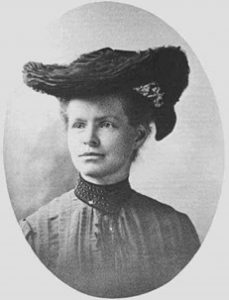 From time to time I find it inspiring to write about women from the past with amazing accomplishments who I have never heard of. Today I’m writing about the first Black woman to earn a medical degree in the United States, a woman who discovered the universe, a woman whose research on genetics overturned hundreds of years of misconceptions, and the woman who built pianos for Beethoven. Have I got your attention?
From time to time I find it inspiring to write about women from the past with amazing accomplishments who I have never heard of. Today I’m writing about the first Black woman to earn a medical degree in the United States, a woman who discovered the universe, a woman whose research on genetics overturned hundreds of years of misconceptions, and the woman who built pianos for Beethoven. Have I got your attention?
Rebecca Lee Crumpler (1831–1895)
It took from 1895 until 2020 for Rebecca Lee Crumpler to receive the recognition she deserved. Cindy Schmerler, writing for the New York Times, notes that until 2020, Crumpler and her husband lay in unmarked graves in a Hyde Park, Massachusetts, cemetery, her contributions forgotten.
Crumpler earned her medical degree from the New England Female Medical College in 1864, the only medical degree ever granted by them to a Black woman. After graduation, she worked as a medical doctor for the Freedman’s Bureau, an agency created by Congress during Reconstruction to provide services for emancipated slaves for whom it was difficult to get medical services from white physicians. Schmerler explains that “throughout her life, she was ignored, slighted or rendered insignificant, even invisible. Because of her race and gender, Crumpler was denied admitting privileges to local hospitals, had trouble getting prescriptions filled by pharmacists and was often ridiculed by administrators and fellow doctors.”
She persevered because she knew the Black community needed her. From her house in Boston she treated mostly women and children, regardless of their ability to pay. She published a book, dedicated to nurses and mothers, called A Book of Medical Discourses, which is considered the precursor to the popular book, published in 1984, What to Expect When You’re Expecting.
Cecelia Payne-Gaposhkin (1900–1979)
Born in England, Cecelia Payne-Gaposhkin’s mother would not give her money for a college education, so she won a scholarship to Cambridge. Although, she completed her course work there, Cambridge would not grant her a degree because she was a woman, so she moved to the United Stated to work at Harvard. According to the New York Times archives, Dr. Cecilia Payne-Gaposhkin was one of the foremost women in astronomy, yet her accomplishments go largely unmentioned. The New York Times notes that she was the first woman to receive a tenured professorship at Harvard and headed the university’s astronomy department from 1956 to 1960. Her doctoral thesis on stellar atmospheres was later described by Otto Struve, head of the International Astronomical Union, as “undoubtedly the most brilliant Ph.D. thesis ever written in astronomy.” Dr. Payne-Gaposhkin is described as the woman who discovered what the universe is made of.
Nettie Stevens (1861–1912)
Born in Vermont in 1861, Nettie Stevens pinched pennies to slowly pay for her education. Finally, at the age of forty-one, she received her doctorate at Bryn Mawr College in the study of genetics. As reported by the New York Times in 1912 in her obituary, “Dr. Stevens was one of the most eminent morphologists in this country and by her success in research and her many scientific articles published in American and German biological journals had made her name widely known both here and in Germany.”
Genetic sex determination was still a mystery, and doctors thought that sex was determined by what a woman ate during pregnancy or how warm she kept her body. Stevens did research on insects and discovered that male insects had XY-shaped chromosomes while female chromosomes were shaped like XX. This discovery overturned hundreds of years of misconceptions. Unfortunately, around the same time in 1905 that she made and published her research, her former advisor, Edmund Wilson, made the same discovery. Her writings were received with skepticism, although her work had the strongest proof. Because of her untimely death, her work was largely overlooked or forgotten, and Wilson is largely credited with this discovery.
Nannette Streicher (1769–1833)
Nannette Streicher is remembered in history as a close friend and caretaker of Beethoven, but she was also a master pianist in her own right who performed for Mozart at the age of eight. She was also was one of the finest piano builders in Europe. Patricia Morrisroe writes that Streicher was a mechanical genius who mastered her father’s piano-building techniques by the age of ten. After her father’s death, she established her own piano-manufacturing company and expanded the range, sound, and sturdiness of the piano as an instrument to be played in performance halls. Her manufacturing warehouses produced fifty to sixty-five pianos a year. She was a friend to Beethoven for over two decades, and they were united by their shared devotion to the piano.
Let us not forget these and the countless other women who have made history.
Photo is public domain.